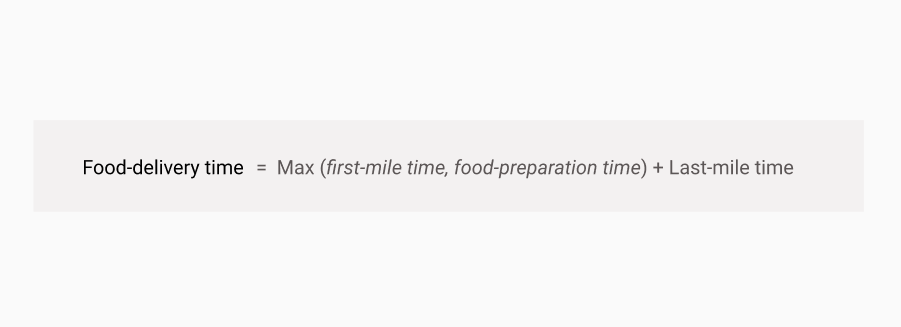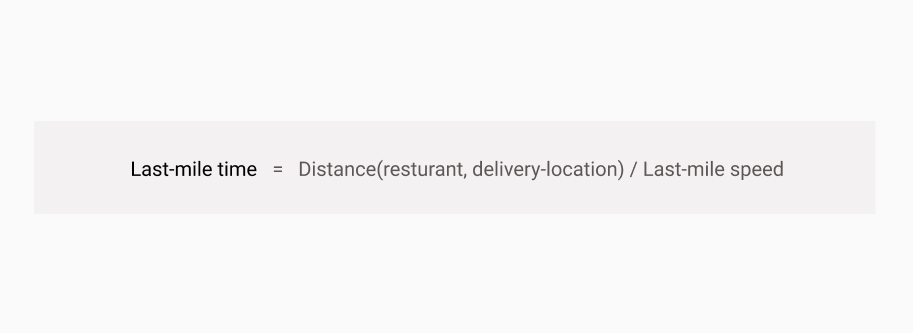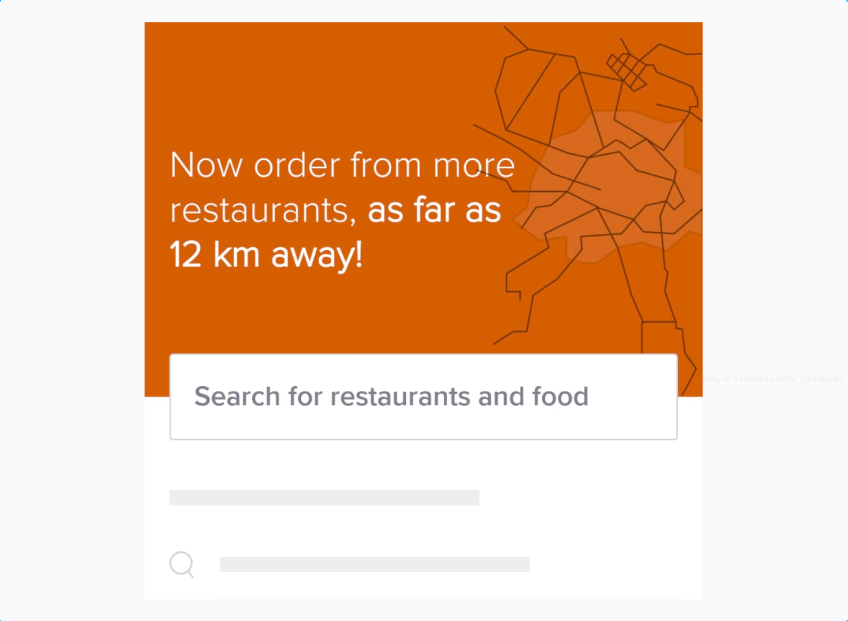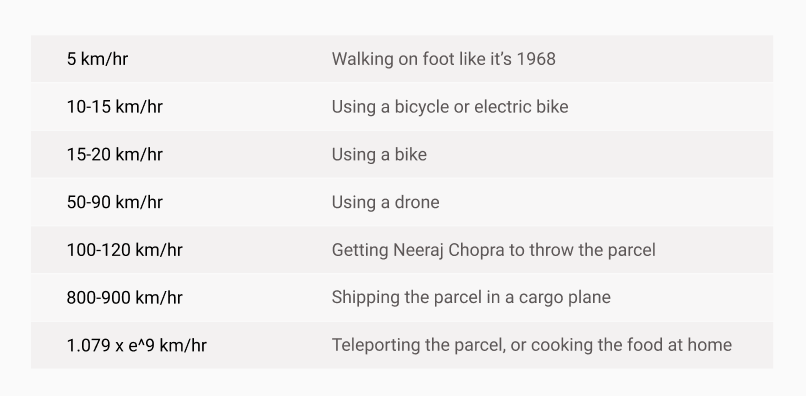How will a drone deliver your food?
The title looks like a good interview question. So here is the right follow-up question, Why?
Let’s list down the contributing factors and follow up from there.
Have you ever been in a situation when you’re (hungry) about to place a food order and the application is showing you 40+ minutes to deliver? It’s a complete turn-off.
- You start to think of some other food item that will be delivered early.
- You might even think of paying more if it can be delivered faster.
Available options and their limitations
You can break down your order delivery timing in the following segments (reference).

Food delivery companies are already doing a lot to deliver it faster for you.
- They minimize the delay between food getting prepared and it getting picked up by ensuring the delivery partner/executive is already at the restaurant before it’s prepared.
- I’ve wondered if they (pseudo) accept the order even before the payment is complete.
There are a lot of optimizations at work, though not all of them are focused on delivering food even faster for customers (reference).
After all, there is Physics and ground reality at play, affecting how fast your food is delivered.

To tackle the first factor (Distance), you are only shown restaurants close enough to you.
Here is Swiggy celebrating their launch (circa, June 2021) that allows you to order from restaurants that are at a distance.

On a side note, 12 km away! isn’t tempting enough, only if they showed me a famous restaurant I was missing out on.
Moving on, if we consider the second factor (Last-mile speed), it comes down to how fast is your food (and the delivery partners/executives are) moving around? Let’s visit some of the available options.

How fast the traffic moves depends not just on the vehicle, but where you live. In Bangalore, the Average Commute Speed ranges between 18-21 km/hr (reference).
Ultimately, Swiggy/Zomato wants to expand the Distance(restaurant, delivery-location) so you’ve more options to choose from (eventually leading to more orders or higher average order size), but they also want to increase the Last-mile speed.
So that customers like you and me can have that [insert your favorite food item here] just as we think about it.
The Deliverator stands tall, your pie in thirty minutes or you can have it free, take the delivery car, file a class-action suit. — Snow Crash
And if they can find a solution that ensures the Last-mile time isn’t increasing as they increase the distance, it’s a win-win. Drones fit somewhere here.
Work is already happening in this domain. Swiggy/Zomato and a few other entities have received approval to start testing the way their drone will deliver your food. (reference)
Execution risks/challenges
Now that we know it will bring a legit business advantage if we can get your food to travel at a higher speed, let’s think how will this happen?
- You can’t continue to get Neeraj Chopra to throw your food because he will eventually have to prepare for the next Olympics.
- Neither we can teleport the parcel, as there is no public AWS API for it yet.
There are many variables if we consider drone delivery as an option and the associated risks/challenges.

First-mile conditions
- Restaurants wouldn’t want to see a lot of drones on their premises instead of visitors for dine-in. There is already discrimination against delivery partners/executives at restaurants, which shouldn’t be encouraged.
- Restaurants will not be able to maintain a dedicated space for drones.
- This might push Swiggy/Zomato to get cloud kitchens to adopt the new delivery method before it goes mainstream to all the other restaurants.
Last-last mile conditions
- Your Last-last mile conditions aren’t that good if you have to help navigate the delivery partner/executive every time you order.
- Yes! The same Himalayan shop building, near ICICI bank
- No! The corner building, can you see Sri Lakshmi apartment?
- And if you don’t have to guide them for every order, these conditions are all sorted for you (and I need your contact details).
Vehicle safety
- As a product person working on drone delivery, I do not want to lose more than 3 drones every 1000 orders, so that I can get my full monthly salary.
- You will have to prevent drones from getting stolen or getting damaged.
Public safety
- Similarly, you wouldn’t want to hit someone when the order is being delivered.
- You and your drone will have to spend the night in jail and the food will get cold.
Government regulations
There are many rules and regulations that you will have to adhere to as you start to utilize this new delivery method. (reference)
Possible workflow
Overall, the drone-delivery operations will follow a phase-wise approach, moving from lesser execution risk to higher execution risk (considering the regulations are manageable).

As covered earlier, drone delivery is just an option, you just want the food delivered faster.
Similar to the existing workflow, once the food is prepared, there will be two major lags to the journey.

Restaurant to Last-mile (pre-flight)
- Unless there is a dedicated space (at the restaurant) for setting up and launching the drones, your food might get shipped first to a place where it can be mounted on a drone.
Restaurant to Last-mile (in-flight)
- This might or might not have a human-in-the-loop (someone operating a drone from home), based on the flight route.
Restaurant to Last-mile (post-flight)
- If you live in a posh society, the Last-mile can be your own map address with a dedicated zone for Swiggy/Zomato drones to (locate and) land.
- Otherwise, it can be a special facility (closer to your location) operated by Swiggy/Zomato.
Last-mile to Last-last mile
- At least for a significant time (2-3 years), you shouldn’t assume a drone will ever come to your balcony. It will still be a delivery partner/executive, just that he/she will pick it from the nearest Last-mile facility.
- But when this happens, you will get your food faster, that’s for sure. Don’t forget to empathize with the bunch of people that worked in the background to make that happen.
Overall, it seems an interesting and challenging problem to solve. And as the saying goes, if you can solve it in India, you can solve it anywhere.
Looking forward to the day where the normal order would take 40 minutes but there is a faster option available, even if it’s Neeraj Chopra throwing my food.